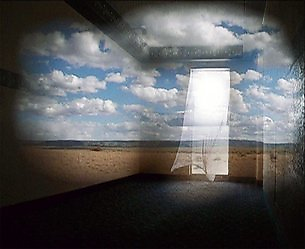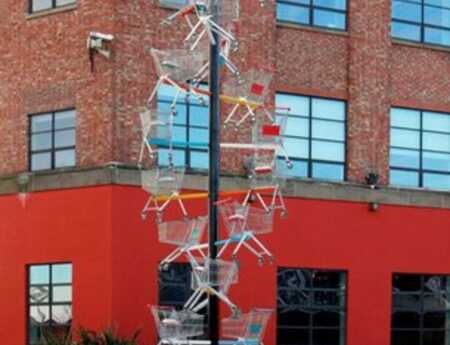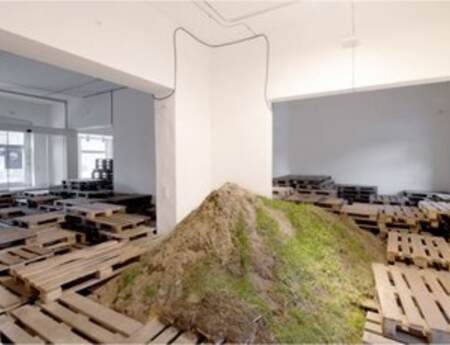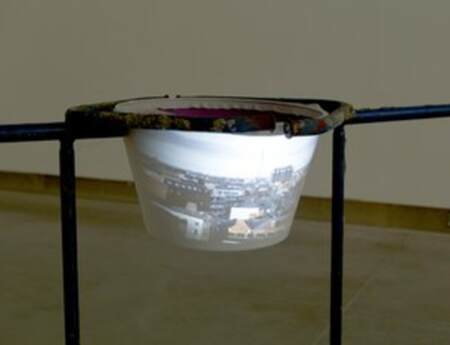Development of Contemporary Sculpture
Curators' thoughts on sculpture being made in Europe today. By Sya van ‘t Vlie.

For the development of contemporary sculpture I consider Marcel Duchamp’s "invention" of the readymade to be of crucial importance. His quitting painting to make ready-mades has been interpreted as a transition from painting to sculpture (from one specific medium to another) and as a transition from painting to art (from a specific medium to the generic art), by Thomas McEvilley and Thierry de Duve respectively. In the sixties, when painting was temporarily at a dead end, the minimalists made a similar transition. Donald Judd quit painting in order to make what he called specific objects, which he thought to be neither painting nor sculpture.
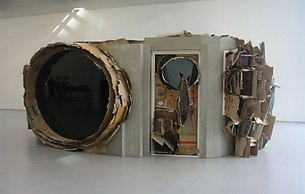
McEvilley saw specific objects as belonging to the field of sculpture. De Duve considered them both painting and sculpture. In his eyes the transition Judd made was also a transition from a specific medium to the generic art. Since then, sculpture was free to explore its boundaries and to cross them, expanding its field. Outdoors this resulted in land art. Art historian Rosalind Krauss distinguished three categories of land art: marked sites, site constructions and axiomatic structures. Indoors these expansions resulted in living sculpture, body art and performance.
All these new categories were registered on photo or film, because of which these new media were considered to be sculpture. But as soon as artists discovered and explored their possibilities they became two autonomous art forms: photography and (video) film.
Crossovers between all these disciplines resulted in the multimedia installation. Installation makers have become experience designers, manipulating viewers to behave in the way they want them to behave. Viewers have become participants, part and co-maker of the art work at the same time.

Sculpture today has nearly stopped being medium specific, it has developed into space oriented or three-dimensional art. Besides traditional crossovers between sculpture and architecture, theatre, nature and 2-D art forms, such as painting, drawing, graphic art, photography and film, new crossovers have come into being between space oriented art and science and life sciences, resulting in research art and bio-art. Some artists like to work with non-artists, creating all kinds of community art.Last but not least, globalization has led to some artists questioning our colonial past. They think a revision of how we see non-western people and the art they make, is called for. Other artists take critical stands on issues such as migration and asylum seekers.
As a curator I like to follow all these developments. I am interested in sculptural explorations and crossovers, both the traditional and the new ones. These more formal considerations, rather than choosing a theme, have been my starting point for the exhibitions I have made so far.
Sources:
Thomas McEvilley – Sculpture in the Age of Doubt
Thierry de Duve – Kant after Duchamp
Rosalind Krauss – Sculpture in the Expanded Field
Sya Van’t Vlie’s list of artists, whose work illustrates her described idea on sculpture:
In view of my ideas on sculpture I think a classification by crossover categories is the best way to present my proposal. But in this version I will try a classification by sculptor instead, naming only the category to which the sculptors and visual artists belong.
Some of the sculptors are well known, even famous, some are not. But together they cover quite well what today’s Dutch sculptors have to offer.
Folkert de Jong - crossover between sculpture and painting (The Netherlands, 1972)
Katrien Vogel - crossovers between sculpture and drawing (Belgium, 1961)
Jack Prins - crossovers between sculpture and graphic arts (The Netherlands, 1947)
Rob Voerman - crossover between sculpture and architecture (The Netherlands, 1966)
Lin de Mol - crossovers between sculpture and photography and videofilm (The Netherlands, 1966)
Fardou Keuning - crossovers between sculpture and theatre (The Netherlands, 1984)
Mari Shields & Johan Sietzema – crossovers between sculpture and nature, as a duo, but also individually.
Mari Shields (USA, 1984); Johan Sietzema (The Netherlands, 1953)
Nienke Korthof - crossovers between public-space-oriented art and science (The Netherlands, 1982)
Falke Pisano - specializes in research art - rossovers between installation and science (The Netherlands, 1978).
Sandro Setola - multimedia installation (The Netherlands, 1976)
Sya van ‘t Vlie
Born in the Netherlands. Lives and works in Amsterdam.
From 1998 till 2010 I worked for the Visual Arts Foundation in Amsterdam. As custodian of the sculpture collection I was responsible for management, conservation and acquisition. For the purpose of acquisition I organized around ten solo and duo exhibitions a year.
Since 2006 I have also worked as an independent curator.
In the summer of 2009 I curated Non-crossovers for Pulchri Studio in The Hague, with 29 sculptors of the Sculptors’ Collective ABK. Non-crossovers are sculptures that explore the boundaries of sculpture. They are sniffing at the boundaries between sculpture and other (visual) art disciplines and nature, without crossing those boundaries.
In the summer of 2011 I curated Kijker in beeld, also in Pulchri Studio. "Beeld" in Dutch has two meanings: "sculpture" and "image", so the title means "Viewer as part of the sculpture" as well as "Focus on the viewer". The exhibition was multidisciplinary, with special emphasis on crossovers between sculpture and theatre or film. I chose fifteen sculptors who made kinetic, performative and/or interactive sculptures and installations, engaging the viewer in various ways. The viewer was part and co-maker of the art work, viewer and viewed at the same time.
At the moment I am preparing Crossovers 1, with works that are crossovers between 3-D art works (sculpture and installation) and 2-D disciplines such as painting, drawing, graphic art, photography and (video) film. The idea is that members of the Sculptors’ Collective ABK invite a visual artist from one of the 2-D disciplines to make such a crossover.
If you would like to contact Sya van ‘t Vlie, please write to info@sculpture-network.org
